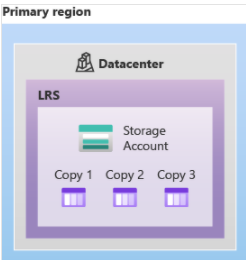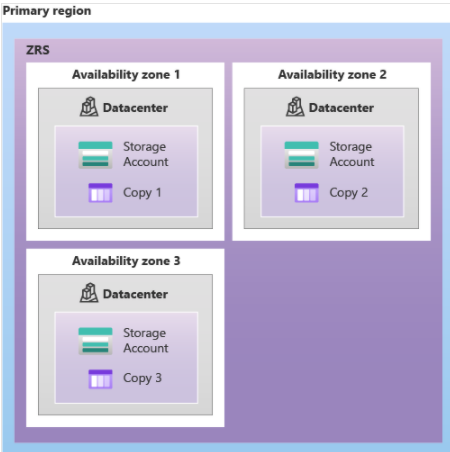Locally redundant storage (LRS) replicates your data three times within a single data center in the primary region. LRS provides at least 99.999999999% (11 nines) durability of objects over a given year.
The following diagram shows how your data is replicated within a single data center with LRS:

LRS is the lowest-cost redundancy option and offers the least durability. If a disaster such as fir or flooding occurs with the data center, all replicas of a storage account may be lost or unrecoverable.
Zero-redundant storage
Zone-redundant storage (ZRS) replicates your Azure Storage data synchronously across three Azure availability zones in the primary region. Each availability zone is a separate physical location with independent power, cooling, and networking. ZRS offers durability for Azure Storage data objects of at least 99.9999999999% (12 9’s) over a given year.
The following diagram shows how your data is replicated across availability zones in the primary region with ZRS:

Microsoft recommends using ZRS in the primary region for scenarios that require consistency, durability, and high availability.
If your application is restricted to replicating data only within a country or region due to data governance requirements, you may opt for LRS or ZRS. The reason, In some cases, the paired regions across which the data is geo-replicated may be in another country or region.
Resource
https://docs.microsoft.com/en-us/azure/storage/common/storage-redundancy

 Add to favorites
Add to favorites